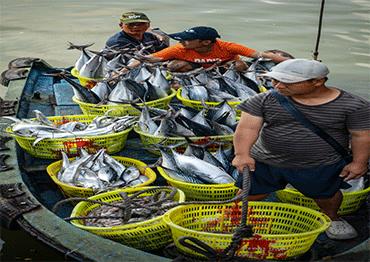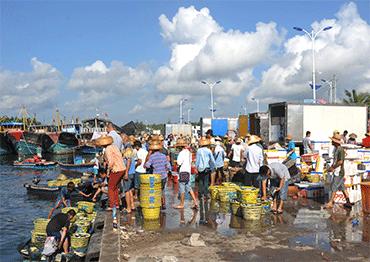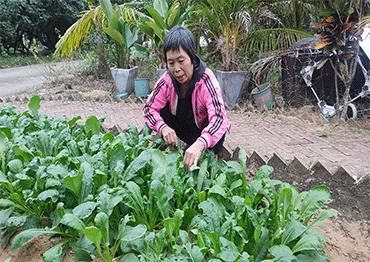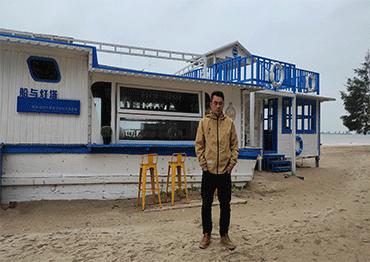According to both Wang Xiuhong and Pan Hongjin, apart from offering direct subsidies to help fishers find new livelihoods, authorities organize training programs in coastal communities. This includes starting their own mariculture projects, seafood restaurants, guesthouses and recreational fishing, or helping them find work in agrifood processing plants.
Xu Xinhong’s son, Wu Shuxian, 34, has attended training sessions on guesthouse management, seafood e-commerce and recreational fishing. “I benefited a lot from these courses organized by the township or the city. They provided guidance to those unfamiliar with these new types of business,” Wu Shuxian said.
It has been a roller-coaster ride for Tanmen’s fishers. A few decades ago, when there were almost no rules, it was a boom time. Han Han, founder and CEO of China Blue, told NewsChina that from the 1980s, domestic markets for red coral, tortoise shell and giant clam surged, but this caused irreversible damage and species collapse.
Almost every family in Tanmen was involved in the clam business, from gathering to processing to selling trinkets and jewelry to tourists. Authorities promoted it as an important industry.
Between 2010 to 2015, one fisher could earn as much as 200,000-300,000 yuan (US$27,446-41,169) from giant clams. So, when the government suddenly banned catching giant clams and selling products made from their shells in 2017, it caught fishers and the Tanmen government by surprise. Around 100 stores closed overnight.
After the ban, Tanmen’s fishers had to make do with regular fishing and seafood gathering. But in the last three years, e-commerce has provided a lifeline, creating a vibrant domestic market for fresh marine fish products such as groupers and parrotfish.
When times were good in the early 2010s, many families built new two-story houses. As fishing income declined, authorities started pushing tourism. Many residents converted their homes to guesthouses. In 2017, Fu Minglin, now 44, renovated an old house in his hometown of Shiwan Village, becoming one of the first people to run a B&B in Tanmen.
With government support, he set up a fishing cooperative of around 40 members. They invested 3 million yuan (US$408,248) to buy the sea use rights for a 12-hectare area near the old port for marine tourism, including a restaurant, leisure fishing, boat hire, scuba diving and eco-tourism. “We welcomed our first tourists in 2023, and the total investment is about 10 million yuan (US$1.4 million) which includes development funding from our village committee,” Fu said. The project offers jobs for female villagers as receptionists, cleaners and gardeners.
Fu told NewsChina the project generated net profits of 1 million yuan (US$140,000) in 2023. But the tourism industry has struggled in 2024 due to bad weather, and so has his recreational fishing project, which was already affected by a shortage of fish, Fu said, standing in front of his blue-and-white seafront café, mocked up like a boat. It is open, but there are few customers.
It is not all doom and gloom. In 2020, with central government ecological recovery funds, Qionghai government started building artificial reefs off Tanmen to help marine life recovery.
“As these man-made habitats attract fish, they provide economic benefits as fishing grounds for commercial and recreational fishers, or as scuba dive sites,” he said. Preliminary monitoring has seen an uptick in fish stocks.
Fu’s projects have brought positive change to communities, providing alternative livelihoods as well as inspiring some young people to come back from the cities.
Wu Shuxian resigned from his government job in 2020, and with the aid of a government grant of 100,000 yuan (US$13,734), he opened two guesthouses.
Previously economically marginalized women have been brought into employment at inns and guesthouses. Sun Qiyuan, 31, works as receptionist earning 3,000 yuan (US$409) a month. She is grateful for the tourism development, which enables people to stay and work in the community and reduces their dependence on fishing.
In 2023, Wu Shuxian set up a small cooperative with five friends, all in their 30s. They ship frozen fish and shrimp around the country through social media platforms. In 2024, Tanmen government invested in five new fishing vessels for the recreational fishing market. The cooperative has a contract to rent and operate them this year.
“A two-hour trip costs 1,580 yuan (US$217) with a maximum nine tourists. Our best scenario would be combining tourism with fishing activities in different seasons to maximize the profits, but it’s unlikely due to the strict rules on boat use,” he said. Fishing and recreational boats require different licenses that are not easy to obtain.
Han Han from China Blue said while there are policies to help fishers transition to alternative sea-based livelihoods, the red tape is off-putting. “For example, the rules say you can’t convert fishing vessels for recreational fishing, so you have to build a new one. That costs millions of yuan, a big stretch for most locals,” Han said.
But Fu still believes that overall, recreational fishing will provide a better income and lower the impacts on marine resources, a more sustainable livelihood than conventional fishing.
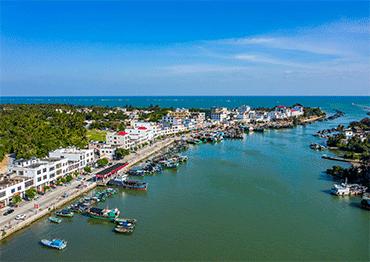
 Old Version
Old Version

